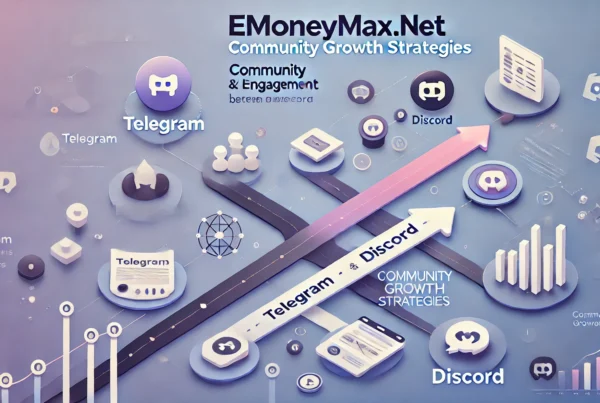
Key highlights:
- Are you launching a new crypto project soon? Then listen up – how you structure the vesting of tokens is make-or-break for long-term success.
- To keep it simple, vesting just means gradually releasing coins or tokens to founders, advisors, and early investors over time instead of all at once.
- Gradual vesting prevents massive sell-offs that could crash your price like an out-of-control crypto rollercoaster. Picture it – you don’t want all your big backers bailing the second you launch! It’s better to release shares steadily so everyone stays invested in the ride.
Welcome crypto entrepreneurs. Today we’ll be diving deep into the often misunderstood yet critically important topic of cryptocurrency vesting. Whether you’re launching an ICO, building an exchange, or developing a new blockchain project, how you structure your vesting plan will have major ramifications for both your short and long-term success.
By the end of this article, you’ll understand the core principles of vesting, learn from best practices and case studies, and feel empowered to craft a vesting schedule tailored perfectly for your unique project. So let’s get started!
What is Cryptocurrency Vesting?
In simple terms, vesting refers to the gradual release of crypto tokens or coins over an extended period of time, rather than an immediate or lump sum distribution. This allows founders, teams, advisors, and early investors to earn their allocation progressively as the project develops, rather than dumping it all at once and potentially crashing the price.
Think of it like this – if your startup just raised $10 million in an ICO, would you want the founders taking that entire sum home on day one? Of course not, that money is meant to go back into building the product and company for years to come. Vesting aims to align the incentives of all parties by making them “vested” in the long-term success of the venture.
Why is Vesting Important?
There are several compelling reasons why implementing vesting is vital for new cryptocurrency projects:
- Price Stability: Gradual token releases prevent massive sell-offs that could send the price plummeting. This gives the community confidence their investment is protected.
- Long-Term Focus: Vesting encourages founders, advisors, and early investors to focus on building sustainable value rather than quick profits. Multi-year vesting schedules literally “vest” people in the long run.
- Reduced regulatory risk: Securities regulators look more favorably on projects that don’t immediately financially benefit founders/advisors, signaling the focus is on the technology/product rather than profits alone.
- More Equitable Distribution: Vesting ensures the playing field is level for all participants entering at different stages, not just those present on day one of the token sale.
- Mitigates lost interest/effort: With clearly defined future releases dependent on continued involvement and success milestones, vesting prevents advisors/founders from losing interest/focus midway through.
Vesting is crucial for establishing long-term confidence that the project won’t abandon its values or investors at the first sign of gains. It’s a best practice that savvy crypto entrepreneurs simply cannot afford to ignore.
How Does Cryptocurrency Vesting Work?
There is no single right way to structure vesting, and the optimal schedule will depend greatly on the specifics of each project. However, here are some of the most common vesting models used:
- Linear vesting: Tokens are released in equal portions (e.g. monthly or quarterly) over a set period of 1-4 years. This is one of the simplest and fairest structures.
- Cliff vesting: A percentage of 25-50% are released on signing, with the remainder following a linear or custom vesting schedule. This incentivizes initial project participation.
- Milestone vesting: Releases are tied to tangible product development milestones being achieved – a good motivator for shipping on deadlines.
- Accelerated vesting: The rate of vesting increases over time rather than staying linear, rewarding long-term commitment.
- Custom schedules: Tailor vesting to different participant types with unique schedules for founders vs advisors vs private sale buyers, for instance.
Most commonly, vesting is built directly into the token distribution smart contract upfront for full transparency. The key is clearly communicating the policy to all parties.
Vesting Case Studies and Best Practices
There is no shortage of examples to learn from when it comes to both successful and failed vesting implementations:
- Ethereum – Founders gradually vested over 2 years after Mainnet launch, avoiding dumping that may have crashed the then-nascent market.
- Filecoin – Linear 12-month vesting post ICO raised $257m. While the price declined, vesting prevented a “pump and dump” scenario.
- XRP – Originally 55 billion coins were granted to founders with no vesting. Massive sales drove price volatility for years. A cautionary tale.
- IBM Hyperledger – No premine, prevents centralization of control. New blockchains would be wise to follow this best practice.
- Reserve Rights – Strong 10-year vesting gave credibility but some felt it was too long for such an experimental asset class.
- Best practices include 1-4 year linear or custom vesting, clear disclosures, automated enforcement, and different policies for early-stage participants vs private buyers. Projects that get this right tend to have long-term sustainable growth instead of pumps and dumps.
Common Vesting Mistakes to Avoid
While vesting aims to protect investors and stabilize projects, it’s not foolproof. Here are some common flaws projects should watch out for:
- Inadequate disclosure: Make sure terms are obvious upfront during token sales. Surprises later damage trust.
- Lack of automation: Manual vesting leaves room for errors or distrust that conditions were properly followed. Smart contracts fix this issue.
- Complex terms: Overly intricate vesting makes understanding difficult. Simpler is generally better for widespread comprehension and participation.
- No hard caps: Open-ended vesting for team/advisors sets the stage for endless selling pressure as more time passes.
- Front loaded release: Significant Day 1 unlock percentage can still encourage immediate profit-taking versus long-term holding.
- Lack of enforcement: Without consequences, vesting terms risk becoming meaningless suggestions rather than binding commitments.
Thankfully there are now experienced crypto PR firms like EmoneyMax that offer vesting services to help projects navigate these pitfalls and structure policy that protects all stakeholders over the long haul.
How to Build the Perfect Vesting Plan for Your Project
By now you understand why vesting matters and some proven models to consider. But every project is unique – so how do you craft the strategically optimal approach customized for your situation? Here are five steps:
- Define Goals – Is the priority stability, adoption, or capital formation? Tailor vesting accordingly.
- Assess Risks – Consider economic, product, and team risks. The higher risk may warrant longer vesting to reassure.
- Map Timeline – Vesting should align with key planned milestones over at least 1-4 years.
- Balance Incentives – Founders, advisors, and private/public buyers all require thoughtfully balanced terms.
- Get Expert Advice – Consult resources like EmoneyMax for unbiased guidance on regulatory concerns and technical implementation best practices.
With diligence on these factors, you’ll develop vesting perfectly aligned with your vision. And you’ll give your project the best fighting chance for lasting success instead of being just another flash in the crypto pan.
Wrapping Up
Treating vesting as an afterthought risks endangering the viability and longevity of your blockchain venture. But handled strategically with care and insight, it becomes a powerful tool that fosters the sustainable growth required to transform vision into reality.


